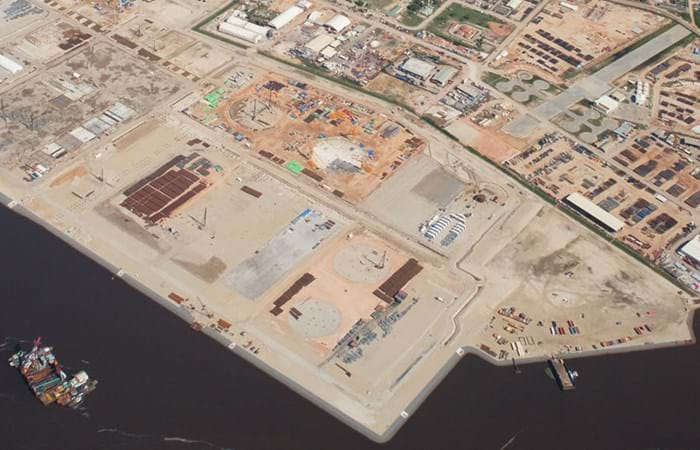Angola is one of the world’s deep water oil exploration ‘hot spots’. More than 50 significant oil discoveries in Blocks 14, 15, 17 and 18 are believed to contain at least 10 billion barrels of oil. With the increase in oil production comes large quantities of associated gas. Historically, in the absence of a local market, associated gas has been flared or reinjected into the reservoirs. Sonangol, the state oil company, and some of its oil producing partners developed the Angola LNG Project to reduce flaring of gas and curtail gas injection. Angola LNG is a joint venture project involving the major oil producers in the country. Sonangol and Chevron are the co-leaders of the project; the other partners are Total, ENI and BP.
The LNG plant will be built on a site south of the Congo River, in Zaire Province, West of the city of Soyo. The plant will have a capacity of 5.0 million tonnes per year, a full containment LNG storage, a LPG and condensate storage and a loading jetty. Angola LNG Limited awarded the contract for preparation of the plant site to the joint venture of Boskalis International B.V. and Jan de Nul Dredging Ltd., in which Boskalis had the lead. The preparation of the plant site consisted of widening and deepening the existing shipping channel in the ‘Baia de Diogo Cão’; dredging a turning basin for the LNG facility and improving the existing Kwanda Basin. The volume dredged was 28 million m3. The land reclamation works for the LNG facility consisted of raising 125 hectares of existing land on the north side of Kwanda Island and creating 65 hectares new land in the Congo river estuaria. The reclamation works required a total of 7 million m3 suitable material. Besides dredging and land reclamation, the works involved the construction of 1.5 km shore and slope protection, the installation of 4.5 km drainage around the fill areas, the installation and monitoring of geo instrumentation, the installation of a concrete oil/water separator and floodvalve as well as the placing of navigation aids in the channel and basins. The design and construct works were awarded by the end of January 2007, and all operations had to be completed by December 2008. The works entailed a highly challenging timeline and required a high degree of flexibility as the scope of work changed over time. This demanded maximum adaptability and fast decisionmaking, particularly in the design phase. Extensive environmental mitigation measures presented a further challenge, as did the unexploded bombs and other ordnance lying on the seabed in the area, a legacy from Angola’s 27-year civil war, which ended in 2002.
